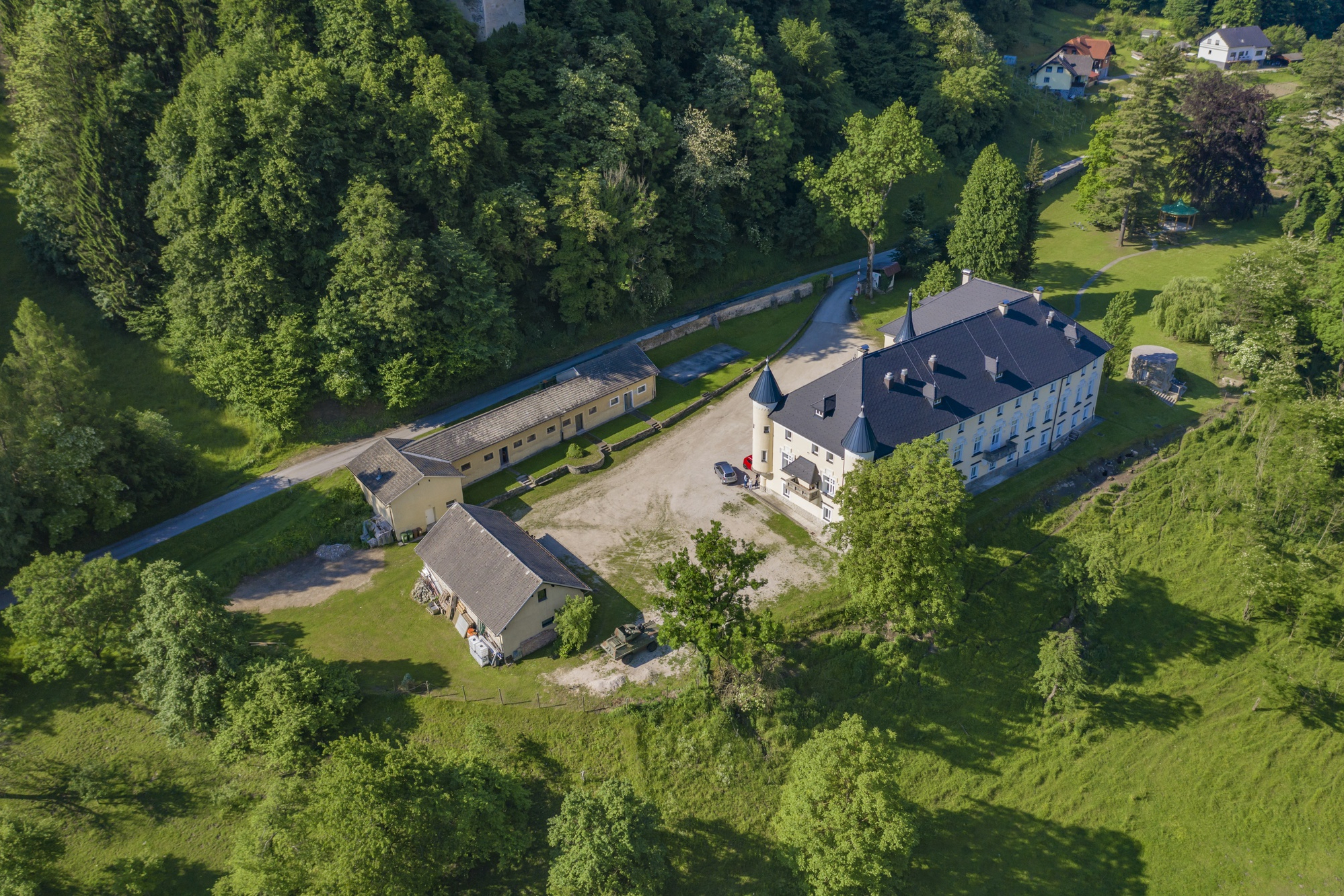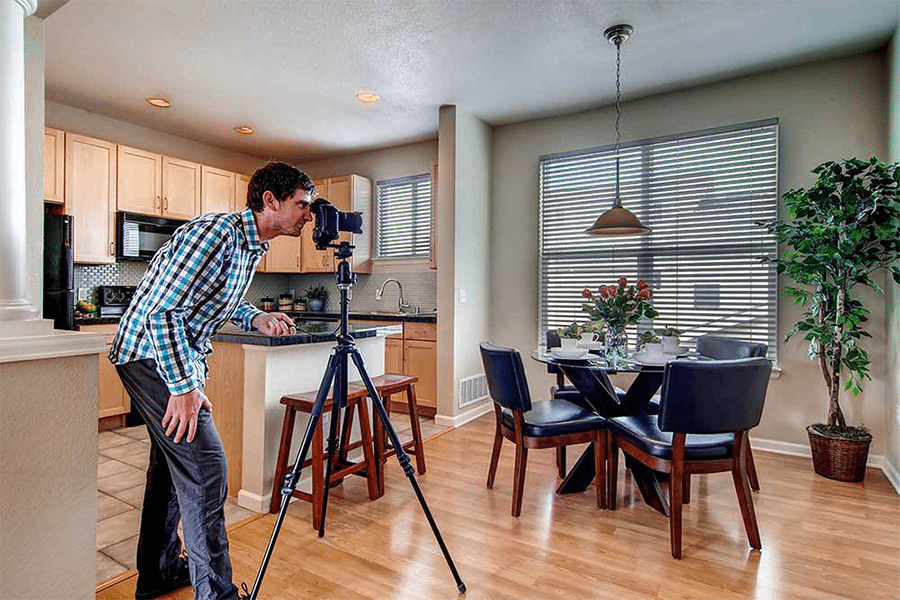How Much Do Real Estate Photographers Make?
The average Real Estate Photographer salary is $52,411 as of June 28, 2022, but the salary range typically falls between $43,622 and $64,458. Salary ranges can vary widely depending on many important factors, including education, certifications, additional skills, the number of years you have spent in your profession.
Number of Homes You Can Expect to Shoot Each Day
Typically, your earning potential as a real estate photographer will chiefly depend on how many homes you shoot each day.
While I’ve literally met photographers shooting 8-10 homes per day in the summer, this is frankly unrealistic for most photographers (and downright crazy, but more power if you have this much energy).
Given that, the average full-time real estate photographer shoots between 2-4 homes per day at the height of the busy season in the summer and 1-2 homes per day in the slower winter season.
Additionally, an average residential home shoot takes 60-90 minutes depending on the home size, though larger homes can take longer.
Increasingly add-ons are becoming the norm in real estate marketing, which can add more time to your shoot (and more profit). Examples of common add-ons include:
- Video
- Aerials
- Floor plans
- Virtual tours
So, four shoots in a day will likely take you 6-8 hours with drive time, and this is before any photo editing and business sales or administration.
As a result, if we consider four homes per day to be a safe maximum of shoots per day, you should expect on average to shoot half of this amount during the summer busy season. And a quarter in the slower winter season as you first get started.
Expected Income Per Home (4 Crucial Factors)
Next, we need to look at data on how much income you can earn per home you shoot. There are 4 big factors here: client type, location, offerings, home size.
1. Client Types
When you are looking to estimate your earning you need to determine what type of client you intend to service. There are four common client types broadly speaking in real estate photography:
Luxury
While you can find training online from photographers shooting luxury homes hanging out of helicopters or shooting 25 flash shots per frame on exteriors and spending hours per photo editing, there is a good chance this isn’t going to be you, at least not at first.
For true luxury properties, agents can spend tens of thousands on marketing, but this is the 1% of the 1% of real estate photography. So let’s cross out luxury clients for now.
Architecture
Architects are generally one step below luxury, at least in their pay scale. These are often portfolio shots for architect firms or home builders, who might complete 10-20 projects per year. Often, you can charge $500-1,000+ for these higher-end shoots.
Again, not likely where you are likely going to start as an existing portfolio and reputation are generally needed to break into this space.
Additionally, the volume is small enough that architecture photography is limited unless you live in a big city or a luxury market like New York or Jackson Hole.
Commercial
Commercial photography is often viewed as an auxiliary or parallel path to residential real estate photography.
For one, commercial photography is primarily found in medium to large cities with spaces ranging from commercial buildings to photos of hotels or restaurants, to imagery for marketing agencies.
Second, pricing is on par to Architecture photography and can be quite complex (and fun) given the larger spaces. Again, let’s cross this off your client list for our earnings model.
Real Estate Agents
Awww, yes, the mainstay client of most real estate photographers. Given there are nearly three million real estate agents in the US alone and over five million homes sold each year, this is the target client for most real estate photographers.
Depending on your location and offerings, most real estate photographers charge $150-200 per shoot as a base price. However, the price can be further adjusted based on the additional factors below.
2. Market Location
For starters, when it comes to income per home the location of your market matters. Two factors come into play: cost of living and the population of your city. These often go hand-in-hand, but there are always exceptions.
Cost of Living
And what I really mean is the median cost of homes in your area. Generally, the higher the cost of homes, the higher you can charge.
In recent years home prices have surged, with the median home price now over $400,000 nationally.
If homes near you are selling above or below this amount on average, you may need to adjust your pricing up or down accordingly.
Population
Typically, the larger the city, the more scarce land is, and thus home prices are higher. However, some cities in the midwest and south are still affordable relative to cities on the coasts.
With a larger population generally means more upper-end homes, which typically demand professional photography and media when listed for sale.
A good starting point is 250,000 in a metropolitan area. Surely, if you live in a bigger city, you may be able to charge slightly more. And the opposite goes for smaller cities or towns (though you may have less competition as well).
3. Home Size
While real estate photographers can debate which pricing model is the best forever (we’ll discuss this at length in future lessons), most photographers charge more for larger home as measured by square footage.
For example, if the base price for a 1,500sf home is $150, it’s not uncommon to charge $50-100 extra for each additional 1,000sf.
In addition, it’s also good to know that in most markets the average home size will be between 1,500sf and 2,500sf.
4. Service Offerings
Probably the most under-appreciated way to build a profitable real estate photography business is being a media and marketing company, not just a photography company.
This is a larger industry shift known as Real Estate Photography 3.0, or REP3 for short.
That said, while some offerings require you to invest in more gear, there can be a good return on investment.
Some popular offerings which can assist in moving your price per shoot above your base price include:



